Scouting in Paradise: The beautiful, hidden and untapped locations of French Polynesia
At the generosity of Tahiti Tourisme and the Location Managers Guild International, The Location Guide was invited alongside location professionals Catherine Kagan, Chris Baugh, Eric Hooge, Scott Trimble, Golden Swenson and Dow Griffith to a familiarisation tour of the French Polynesian Islands.
The only thing that ever came close was a garden in Brazil but it was definitely different so this is a stand out location.
Golden Swenson
When describing the archetypal 'island paradise', you can always be sure that French Polynesia will enter the discourse, usually in reference to either Tahiti or Bora Bora. The islands have become characterised for their appeal as tourist destinations and the industry that has boomed around it, but we were determined to unearth the various ways in which the islands could be used as a filming destination.
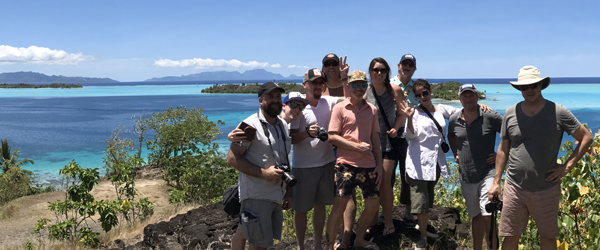 French Polynesia itself is comprised of 118 islands, some of which are entirely uninhabited. With only 8 days to scout however, our trip was largely delegated to four main islands: Tahiti, Moorea, Raiatea and Bora Bora. A few days into the fam tour and it became readily apparent that each of the major islands are different in their own way.
French Polynesia itself is comprised of 118 islands, some of which are entirely uninhabited. With only 8 days to scout however, our trip was largely delegated to four main islands: Tahiti, Moorea, Raiatea and Bora Bora. A few days into the fam tour and it became readily apparent that each of the major islands are different in their own way.
As the largest island in French Polynesia, Tahiti is also the most densely populated with over 183,000 residents. Travelling from Fa'a'ā International Airport to downtown Papeete, it was clear to see that an urban lifestyle had made its way to the island, presenting a stark contrast to the nearby palm trees and black-sand beaches. Filming in Papeete is made even easier by the fact that all local shops are closed on Sundays, leaving the streets almost deserted and readily available for productions to set up on location.
Catherine Kagan (Captain America: Civil War, Fast & Furious 7) was quick to note how parts of the nation’s capital could easily double for urban areas of Africa, while the central market place appeared to have been plucked right out of South-East Asia. Tahiti’s capacity to double soon became a major draw for the group as we headed further inland to the Papenoo Valley.
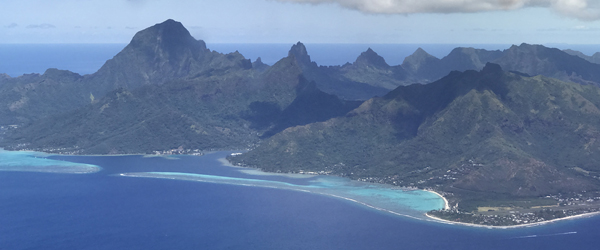 A 30 minute drive away from Papeete had almost tricked us into thinking we had travelled to a different country entirely. Following the Papenoo River took us right into the heart of Tahiti, where the discovery of waterfalls and luscious sprawling greenery couldn’t have been a further cry away from the lively streets we had encountered earlier. The heavy mist that hung above the atmosphere struck similar tones to the jungles of Vietnam and Cambodia, not a bad comparison when you consider that Tahiti is just under eight hours flight time away from Los Angeles.
A 30 minute drive away from Papeete had almost tricked us into thinking we had travelled to a different country entirely. Following the Papenoo River took us right into the heart of Tahiti, where the discovery of waterfalls and luscious sprawling greenery couldn’t have been a further cry away from the lively streets we had encountered earlier. The heavy mist that hung above the atmosphere struck similar tones to the jungles of Vietnam and Cambodia, not a bad comparison when you consider that Tahiti is just under eight hours flight time away from Los Angeles.
Three of the most interesting places we went to were Faanui dock and an abandoned Club Med in Bora Bora, and back alleys in downtown Papeete in Tahiti Nui.
Scott Trimble
For those after a more controlled tropical environment however, the Water Gardens of Vaipahi are a great alternative and even have their own waterfall. Golden Swenson (Survivor, American Grit) noted as we strolled by the pools rich with plant life: “I've been to botanical gardens but not quite the tropical version that this is. The only thing that ever came close was a garden in Brazil but it was definitely different so this is a stand out location."
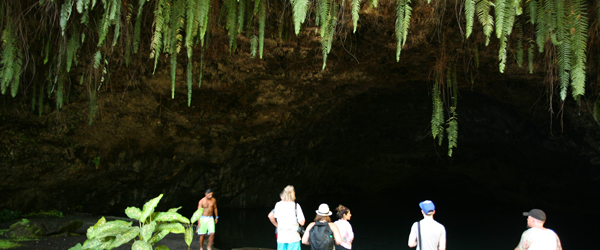 Moorea on the other hand hosts an entirely different natural landscape despite only being a short ferry ride away from Tahiti. Mount Tohivea towers over the rest of the island at 3,960 feet, which makes for a fantastic backdrop to the hints of civilisation that exist along the coastline below. One such example we came across was a modern church with cream coloured walls and a red-tipped spire, standing out against the green overgrowth that loomed precariously behind it.
Moorea on the other hand hosts an entirely different natural landscape despite only being a short ferry ride away from Tahiti. Mount Tohivea towers over the rest of the island at 3,960 feet, which makes for a fantastic backdrop to the hints of civilisation that exist along the coastline below. One such example we came across was a modern church with cream coloured walls and a red-tipped spire, standing out against the green overgrowth that loomed precariously behind it.
The magnitude of Mount Tohivea was only fully appreciated however upon reaching Belvedere Overlook. The view from the hilltop is entirely mesmerising and would leave audiences stunned with the same sense of amazement that we felt upon seeing the landscape for the first time. That sensation is exactly what makes French Polynesia such a valuable commodity to the production industry – most of these locations have yet to be featured on film and are effectively brand new, just waiting to be shot for the first time. With the increasingly difficult task of finding new ways to shoot Hawaii, French Polynesia’s main competitor, this aspect can only become more appealing to location professionals.
Filming underwater in French Polynesia is something exceptional because the lack of plankton and living matter improves the water clarity considerably. You can see up to 300 feet down below.
Manu de Schoenburg
On the topic of location saturation, Dow Griffith (Ghost in the Shell, After Earth) detailed: “in Hawaii, people struggle as they try to get it to look like how they want it to be. The tropical identity of Hawaii is largely manufactured as coconut palms never originated on the island but were brought in from Polynesia. Some of the coconut palms were simply planted by resorts or previous productions! People try to make use of the botanical gardens and capitalise on the valleys but the scenery just isn't as impressive as what you'd find in French Polynesia.”
One of the more surprising aspects of the islands are the remnants of French Polynesia’s involvement in the Second World War. French forces used the Polynesian islands as a strategic outpost during the War, constructing a number of military bases and ports in the process. While we unable to scout the bases we came across due to lack of clearance, the sites could be used as filming locations and would be fantastic for period projects.
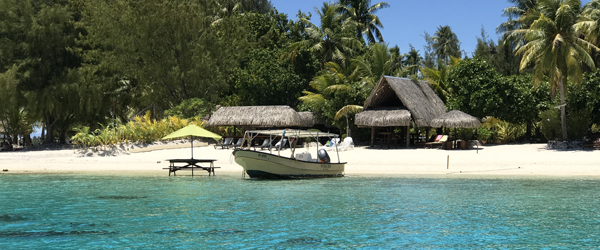 A structure of the era that we were able to scout however was the main dock in Faanui, a small town in Bora Bora. As the odd truck and worker passed on by, it became clear that the area was rarely ever busy, making set-up a lot easier for any potential shoots. The dock itself is fairly minimalistic with a lot of open space, meaning that equipment can be moved throughout the area with relative ease.
A structure of the era that we were able to scout however was the main dock in Faanui, a small town in Bora Bora. As the odd truck and worker passed on by, it became clear that the area was rarely ever busy, making set-up a lot easier for any potential shoots. The dock itself is fairly minimalistic with a lot of open space, meaning that equipment can be moved throughout the area with relative ease.
Scott Trimble (Justice League, La La Land) was particularly impressed upon discovering these types of locations in French Polynesia, detailing: “three of the most interesting places we went to were Faanui dock and an abandoned Club Med in Bora Bora, and back alleys in downtown Papeete in Tahiti Nui. Scouting on a fam tour usually means being escorted to a bunch of beautiful locations, but it's quite beneficial for us to also see the dirty or abandoned places nearby because they're incredibly cinematic and the type of environments that we often need for feature films."
These smaller islands would certainly entice feature film productions hoping to shoot characters that have been marooned and cut off from civilisation.
Scott Trimble
While there are fantastic locations to be found throughout all of French Polynesia, it undoubtedly Bora Bora that gets the most attention internationally and it wasn’t hard to see why. The island’s world renowned resorts and iconic overwater bungalows (soon celebrating their 50th anniversary), despite attempts to be replicated elsewhere, remain the epitome of island luxury and were featured as such in Peter Billingsley’s Couples Retreat.
 For his directorial debut starring Vince Vaughn and Malin Åkerman, Billingsley commandeered the St. Regis Resort and utilised its many amenities which overlook the clear blue South Pacific Ocean to convey a true sense of paradise. The ocean is of course one of the most difficult aspects of the environment to replicate elsewhere due to its unique habitat.
For his directorial debut starring Vince Vaughn and Malin Åkerman, Billingsley commandeered the St. Regis Resort and utilised its many amenities which overlook the clear blue South Pacific Ocean to convey a true sense of paradise. The ocean is of course one of the most difficult aspects of the environment to replicate elsewhere due to its unique habitat.
When I enquired about the process of using underwater locations, Manu de Schoenburg of the local production service company, Filmin’ Tahiti explained: “filming underwater in French Polynesia is something exceptional because the lack of plankton and living matter improves the water clarity considerably. You can see up to 300 feet down below.”
Some resorts are lucky enough to occupy their own islands, such as Le Taha’a Island Resort. Entirely secluded from the rest of civilisation, Taha’a offers a sense of tranquillity that simply couldn’t be achieved without full scale lock-offs taking place. As we visited a number of smaller islands throughout the tour, the group instantly recognised this sense of isolation as a key selling point that could bring them back to French Polynesia in the future.
Scott also made note of the environment: “these smaller islands would certainly entice feature film productions hoping to shoot characters that have been marooned and cut off from civilisation. There seems to be a lot of these areas surrounding the major islands so it would be easy to access them, and then you'd have the highly coveted shot of an island surrounded by nothing else other than the ocean. It's definitely a major draw for coming here.”
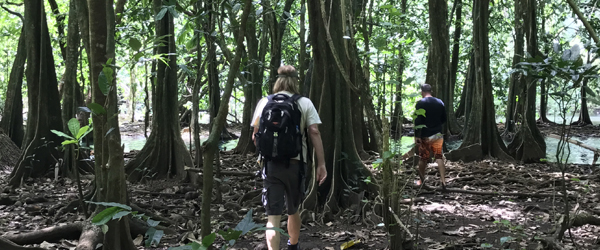 Save for the extravagant wide angle shots that could be achieved with the smaller islands, their isolation can also ease the logistics of the shoot. Cait Langley, Communications Manager at Tahiti Tourisme explained: “we see as many visitors in a year as Hawaii sees in a single week, so by extension privacy comes naturally alongside the 'castaway island' style. Some of the islands are so secluded that you can often feel as though you're the only one on them.”
Save for the extravagant wide angle shots that could be achieved with the smaller islands, their isolation can also ease the logistics of the shoot. Cait Langley, Communications Manager at Tahiti Tourisme explained: “we see as many visitors in a year as Hawaii sees in a single week, so by extension privacy comes naturally alongside the 'castaway island' style. Some of the islands are so secluded that you can often feel as though you're the only one on them.”
With the need for lock-offs made redundant by filming on these islands, shoots can last as long as the production requires and not be forced to adhere to a schedule. Another huge logistical draw for shooting is that film permits are rarely required to operate on location, although the closure of major roads does require that alternative routes be established for the public.
A local film office did exist once upon a time but was shut down in 2011 amidst a period of political turmoil. With the recent elections ushering in a new era of political stability however, the French Polynesian Government is keen to reopen the office. Formal discussions between the group and members of the local Government revealed an interest in installing a new tax incentive programme. The 30% tax rebate (TRIP) employed in France does extend to the Polynesian Islands but acquisition can be tricky and preference is given to projects that shoot the islands as they are, without doubling them for elsewhere.
Don’t expect to source the latest equipment locally as the best course of action is to import the items you need from either Los Angeles or New Zealand, the two largest production hubs close to Tahiti. What it lacks in equipment facilities, the region more than makes up for in production service companies. French Polynesia boasts a number of experienced industry professionals who have credentials on a variety of production sizes.
The recent parade of big budget feature films shooting on location (Point Break and Batman v Superman: Dawn of Justice) have become testaments to the skills inhabited by the local workforce. In the case of larger productions such as these, the local companies will band together to provide the most efficient service possible to get the job done. With the local Government preparing to expand its filming infrastructure and reach out to more productions than ever before, the time is most definitely now to scout the incredible locations of French Polynesia that have thus far been hidden gems just waiting to be found.
The Location Guide would like to thank Tahiti Tourisme and the Location Managers Guild International for an invitation to join their familiarisation trip, and for the hard work of all those involved who made the tour such a great success.
All photographs featured in this article were graciously provided by Scott Trimble - Location Manager.
Comments
Not Logged in
You must be logged in to post a comment
There are no comments